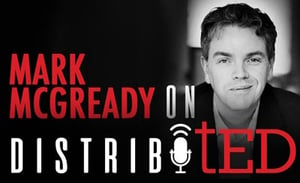 Recently I did a podcast with Scott Costa of tED magazine. I compared customers to fish.
Recently I did a podcast with Scott Costa of tED magazine. I compared customers to fish.
Let me touch a little on what I’m trying to convey here.
Traditionally, we’ve always viewed our worlds by tangible categories. Types of customers, or markets or products. Geographical regions. It doesn’t really work well though. It’s a good way to measure, but not a good way to understand. You really need to differentiate by behaviors.
I’ve made a suggestion of having five customer categories which I’ll review below, but you should feel free to find your own definitions. However your business is structured, define your customers by your kind of relationship with them. For example, you could have long term customers vs medium term vs short term. Price driven vs product driven. Large and small wallet share. Strategic or non strategic. Sales force engaged vs inside engaged vs disengaged. Anything that’s descriptive of the business relationship or behaviors, rather than who they are.
I had proposed that customers fit into five categories of fish:
- Whales: largest accounts, strong and stable, long lived
- Sharks: shops from distributor to distributor, looking for the best prices and opportunities, mercenary and ruthless
- Tropical fish: complex customer with specific needs, requiring a deep understanding of their environment in order to keep them healthy
- Tuna: everyday profitable accounts, your financial backbone
- Minnows: under-the-radar small customers, coming and going as needed
As a general rule, this is a definition based on customer size – the whales are $300k per year and above on average for the typical customer, minnows are $30k per year and below, and the in-between fit based on the types of transactions. Sharks are job to job, tropical fish buy a large diverse range of SKUs or might be the only customer for particular product lines, and tuna are everyone else. From our traditional definitions, we might suggest commercial contractors are sharks, residential contractors are tuna, and industrials facilities and OEM’s are tropical fish. Whales and minnows are just large and small variations on these three categories.
The purpose of looking at your business this way is ultimately understanding that your sales approach is different based on these behaviors. This is an exercise to define your relationship with the accounts. It informs you on how to manage and market to them, and can help you define where your business is strong and growing, or where your business is struggling. This in turn gives you insight to your sales force strengths and weaknesses, and can inform where you need to invest or reassign resources. There are a lot of truths that get uncovered by looking at your business this way.
It will also make your marketing more effective. It’s one thing to target a message to commercial contractors. Its’s quite another to target a message to your whale contractors, vs your shark contractors, vs your minnow contractors. They each will respond to something different from you because they each have a different relationship and different needs from you. And marketing is ultimately about communicating your value that each particular customer is looking for.
I’ve found that many companies don’t know who they are. This feels like a scandalous thing to say, but as I’ve delved into different data sets and looked at behaviors, whether manufacturer or distributor, I’ve been able to identify who they are compared to what they think. There’s no hiding from data, and the behaviors with transactions can inform you on whether a customer sees you as their primary distributor or as supplemental support, what kind of share of their spend you get and how reliable or unstable their business is with you. And the right ongoing measurements can uncover issues long before they make it to your sales radar.
One simple example I found was the number of customer emails or phone calls. That’s a measure you’d never see on any report, but it was a great way to track the everyday engagement with an account. If they held steady you knew business was steady, if they picked up you knew more was coming, and if they started to drop you could bet sales would do the same. In life you develop an instinct for the strength of a relationship, and when things go quiet you either expected that to be the case and you know things are ok, or you didn’t expect it and you know something is coming. Like in a poker game, business people have tells, and you need to know how to read them.
So consider taking a look at your business from a different angle. For one it’s a good mental exercise, for another it might let you learn something about your business you didn’t know today. Ultimately it’s on you to learn all you can about the fish you want to catch.
Learn more about your company by taking the new Building a Connected Business Assessment. Learn more here.

